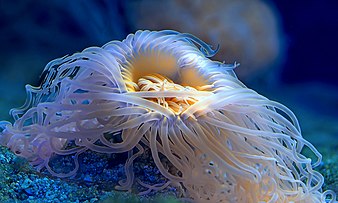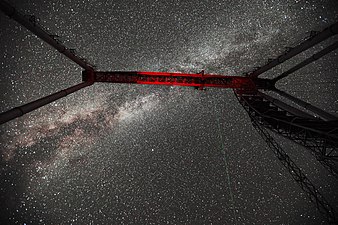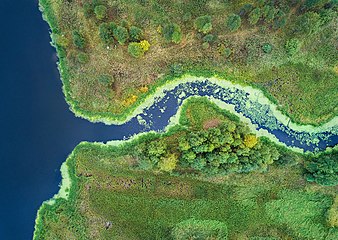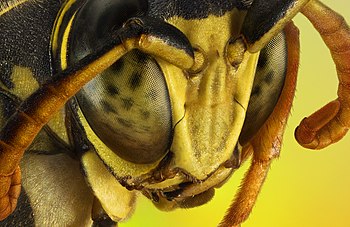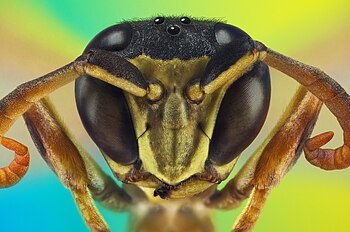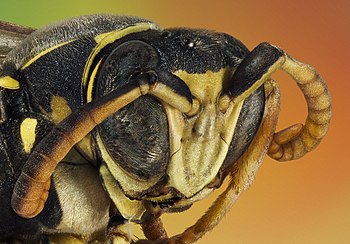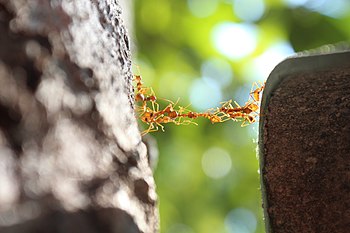Commons:Wiki Science Competition 2019/Winners/Russia
Jump to navigation
Jump to search
Australia · Estonia · France · India · Ireland · Italy · Malaysia · New Zealand · Poland · Portugal · Russia · Spain · Switzerland · Ukraine · United Kingdom · United States ··· The rest of the World
![]() These are the finalists for WSC2019 in Russia.
These are the finalists for WSC2019 in Russia.
This country-level selection had a specific national organizer and a national coordination page.
| MICROSCOPY IMAGES from Russia | ||||
National winner |
II prize | III prize | ||
| Crystals (mainly sugar) in a dried Coca Cola drop under a microscope. Polarization. Crossed polarizers. Alexander Klepnev | Chrysopidae еуе / (stacking of 30 frames) Грибков михаил | Colorized (pseudo-colors) electron microscopy (SEM) image of lilac blossom. SEM-image obtained on LeoSupra 50 VP Magnification 1000x TiberiusRufus
| ||
| MICROSCOPY IMAGES from Russia | ||||
| Finalist | Finalist | Finalist | ||
| "Coffee ring" from Aluminium Oxide particles (150 nm) on cover glass coated with gold (thickness 20 nm). M.al-muzaiqer | Facies of human tears. Panorama, dark field. Objective 10x. Arseniy1109 | Protective fiber on the 200 rubles banknote. Ultraviolet light Alexander Klepnev
| ||
| GENERAL CATEGORY IMAGES from Russia | ||||
National winner |
II prize | III prize | ||
| Coral fluorescence Грибков михаил | Large azimuth telescope. The territory of the Special Astrophysical Observatory of the Russian Academy of Sciences. In the photo: Telescope's tower crane.Mplot | Aerial view of a tributary of the Chusovaya river, Sverdlovsk region. Vasily Iakovlev
| ||
| GENERAL CATEGORY IMAGES from Russia | ||||
| Finalist | Finalist | Finalist | ||
| Ink ball of a ballpoint pen. Ssevantossj | Trees demonstrate an interesting phenomenon - a shyness of the crown. Novosibirsk, Botanical Garden of the SB RAS. Vladislav Nekrasov | Wheat infected leaves with stem rust pathogen with a specific resistance gene. VasiliyNov
| ||
| PEOPLE IN SCIENCE from Russia | ||||
National winner |
II prize | III prize | ||
| Watching the universe. StasKonovalenko | Doctor of Geological and Mineralogical Sciences Ivan Kulakov. Kamchatka Volcano Observation Smakogonov | Alexander Samuilovich Kravets studies the philosophical problems of science for over 55 years. Alina Gribanova
| ||
| PEOPLE IN SCIENCE from Russia | ||||
| Finalist | Finalist | Finalist | ||
| Heinrich Ritter, a 4th-year student of the Faculty of Natural Sciences, examines the ascites form of RLS cancer in mice at the Laboratory of Induced Cell Processes at the Institute of Inorganic Chemistry of the SB RAS. Vladislav Nekrasov | Junior researcher Andrei Kartoziia is ready for an amazing walking trip to the Samoylov Island scientific station after geophysical study. We studied permafrost and frozen deposits by the means of electrical resistivity tomography. Alexey Faguet | Phanagoria is Russia's largest archaeological monument of the ancient era, located on the Taman Peninsula. In the photo: excavations of the upper city. The upper city, or Acropolis, is the site of the original settlement. Mplot
| ||
| Non-photographic media from Russia | ||||
National winner |
II prize | III prize | ||
| Video accelerated 8 times. Bacteria have been added to a drop of human blood. The video demonstrates how a segmented neutrophil finds a pathogen and absorbs it. In this way, neutrophils protect a person when bacteria enters the body through a wound. Andrei Savitsky | Video accelerated 15 times. One can observe the process of dividing ciliates into two parts, the formation of cilia, the change in the shape of the cells from the balls into bells. Division of ciliate Vorticella Sp. Andrei Savitsky | Star trails due to the Earth rotation. 134 frames (each of 30 sec exposition) shot from 2014-01-05 02:59:55 to 2014-01-05 04:12:56 and stacked. Equipment: camera Canon EOS 450D, lens EF 50mm f/1.8, tripod. f4, ISO 800. Point of observation: Special astrophysical observatory of the Russian academy of Sciences, Nizhniy Arkhyz, 43.650124N 41.431074E. Igor da Bari
| ||
| Non-photographic media from Russia | ||||
| Finalist | Finalist | Finalist | ||
| Amphileptus. Differential interference contrast. Ob. 20x. Alexander Klepnev | The movement of leukocytes in the blood. Phase contrast. Video accelerated 10 times. Water with bacteria has been added to the blood, as before the leukocytes were practically not active. Red blood cells in the video move due to the flow of fluid and not by themselves. Phase-contrast microscopy. Andrei Savitsky | Bideloid rotifer in the process of feeding. Phase contrast. 500x. Andrei Savitsky
| ||
| WILDLIFE & NATURE from Russia | ||||
National winner |
II place | III place | ||
| Environmental disaster in Levikha Village, Sverdlovsk region of Russia. The legacy of industrial progress. Vasily Iakovlev | Horse Spider (60 frames stacking). Грибков михаил | The picture was taken during the trip to Kandalaksha, Murmansk region, Russia. There were few bursts of aurora and I was able to shoot the most powerful flash Gornaevv
| ||
| WILDLIFE & NATURE from Russia | ||||
| Finalist | Finalist | Finalist | ||
| Parasitic rider's head (size 1 mm). Грибков михаил | Cladonia deformis and Polýtrichum commúne. S.katrinaH | Bird ringing is a common practice for individual identification of bird. There is a text on the ring about city of making and individual number. All the information of bird's location is kept in the Banding Center. Ural owl (Strix uralensis) ringing. YanaDom
| ||
| Image sets from Russia - Winner | ||||
| Heads of different insects. Retro Lenses | ||||
|
| ||||
| Image sets from Russia - II prize | ||||
| Anatomy of plant shoots. Anatoly Mikhaltsov | ||||
|
| ||||
| Image sets from Russia - III prize | ||||
| Ants building a bridge from their bodies. Chuxlancev | ||||
|
| ||||
| Image sets from Russia - Finalist | ||||
| Diatoms. Alexander Klepnev | ||||
|
| ||||
| Image sets from Russia - Finalist | ||||
| Plants' seeds. Alexander Klepnev | ||||
|
| ||||
| Image sets from Russia - Finalist | ||||
| Insect wings. Andrei Savitsky | ||||






